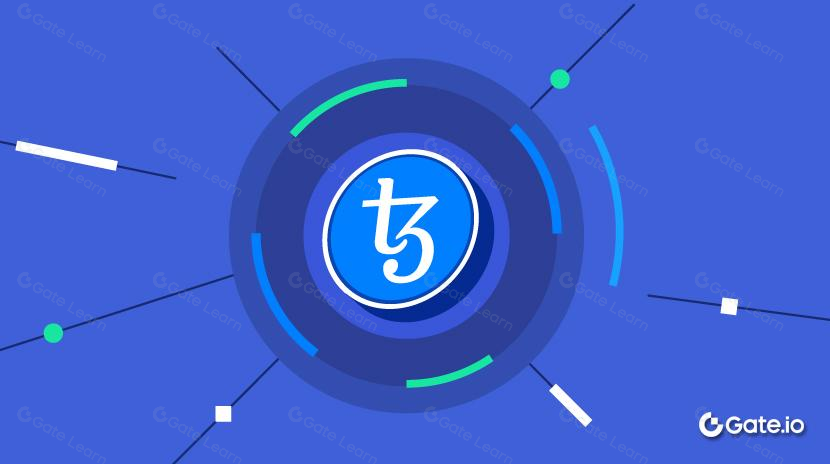Знайомство з Tezos
У цьому початковому модулі «Знайомство з Tezos» ми починаємо всеохоплюючу подорож у заплутаний світ Tezos, блокчейн-платформи, яка суттєво відрізняється від традиційних блокчейн-моделей. Tezos виник на основі бачення створити блокчейн, здатний розвиватися та органічно адаптуватися, як відповідь на жорсткість і фрагментацію, які спостерігалися в попередніх системах блокчейну. Цю ідею втілили в життя Артур і Кетлін Брейтман, які прагнули вирішити такі фундаментальні проблеми, як управління мережею та оновлення протоколів, які стали головними суперечками у світі блокчейнів.
Основне бачення
Tezos виник із інноваційних умів Артура та Кетлін Брейтман, поєднавши їхній досвід у технологіях і фінансах, щоб прокласти новий шлях у технології блокчейн. Їхнє амбітне бачення спрямоване на усунення обмежень традиційних систем блокчейну, зокрема їх жорсткості та нездатності адаптуватися. Це передбачення призвело до створення Tezos, платформи, розробленої для еволюції та гнучкості, що встановило новий стандарт у світі блокчейнів.
Інноваційний збір коштів
Ключовим моментом в історії Tezos стала його первинна пропозиція монет (ICO) 1 липня 2017 року, коли було зібрано 232 мільйони доларів США, що стало одним із найбільших зборів коштів у світі блокчейнів на той час.

Докладніше: Що таке Tezos? Усе, що вам потрібно знати про XTZ
Tezos є свідченням інновацій у технології блокчейну, представляючи самозмінювану книгу, яка дозволяє мережі оновлюватися за допомогою демократичного та інклюзивного процесу управління в ланцюзі. Ця унікальна функція Tezos дозволяє уникнути руйнівних хардфорків, забезпечуючи плавну та безперервну еволюцію протоколу. Демократичний характер цієї моделі управління є відмінною рисою Tezos, що дає можливість спільноті зацікавлених сторін пропонувати, обговорювати та впроваджувати зміни в протокол. Це модель, яка символізує перехід до більш інклюзивного та спільного підходу до управління блокчейном.
Технологічна основа Tezos також заслуговує на увагу. Він працює на основі консенсусного механізму Liquid Proof-of-Stake (LPoS), який не тільки оптимізує енергоефективність, але й демократизує процес перевірки транзакцій і створення нових блоків. Цей підхід знаменує відхід від енергоємних систем Proof-of-Work, які використовуються в інших мережах, таких як Bitcoin, що робить його більш стійким і інклюзивним варіантом.
Шлях Tezos з моменту створення був відзначений серією прогресивних оновлень, кожне з яких покращує функціональність, безпеку та масштабованість мережі. Ці оновлення, ратифіковані на основі консенсусу зацікавлених сторін, підкреслюють здатність Tezos до постійного вдосконалення та адаптивності, особливість, яка виділяє його в просторі блокчейну.
Як платформа Tezos виходить за рамки лише своєї технологічної майстерності. Це являє собою зрушення в тому, як мережі блокчейн можуть працювати, процвітати та розвиватися в постійно мінливому цифровому ландшафті. Його акцент на оновленнях, керованих спільнотою, і масштабованих моделях управління позиціонує Tezos як попередника та план майбутніх блокчейн-платформ. Крім того, підхід Tezos до децентралізованого управління викликав жваві дискусії в ширшому блокчейн-спільноті, вплинувши на те, як інші мережі розглядають управління та адаптивність.
У цьому модулі ми заклали основу для глибокого розуміння Tezos, зосередившись на його походженні, його інноваційних функціях і його важливій ролі в розвитку технології блокчейн. Подальші модулі спиратимуться на ці знання, заглиблюючись у конкретну механіку моделі управління Tezos, її механізм консенсусу, а також різноманітні застосування та наслідки цієї унікальної платформи блокчейн.
Основні моменти
- Tezos представляє новаторський підхід до технології блокчейну з самозмінною книгою та демократичною моделлю управління в ланцюжку.
- Його початок і розвиток були зумовлені баченням подолання обмежень традиційних блокчейнів, зокрема в управлінні та адаптивності.
- Мережа Tezos, заснована на консенсусному механізмі Liquid Proof-of-Stake, пропонує стійку, ефективну та інклюзивну платформу для операцій блокчейну.
- Оскільки Tezos продовжує розвиватися завдяки оновленням, керованим спільнотою, це створює прецедент для майбутніх блокчейн-платформ, демонструючи потенціал постійного вдосконалення та адаптивності в блокчейн-простір.





